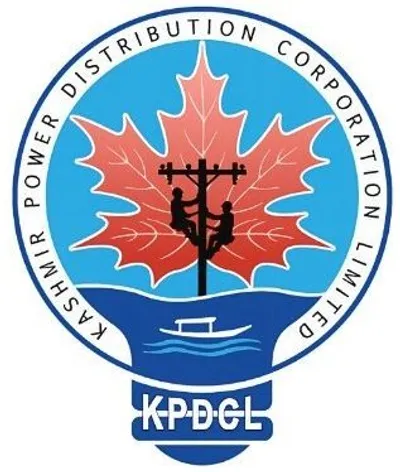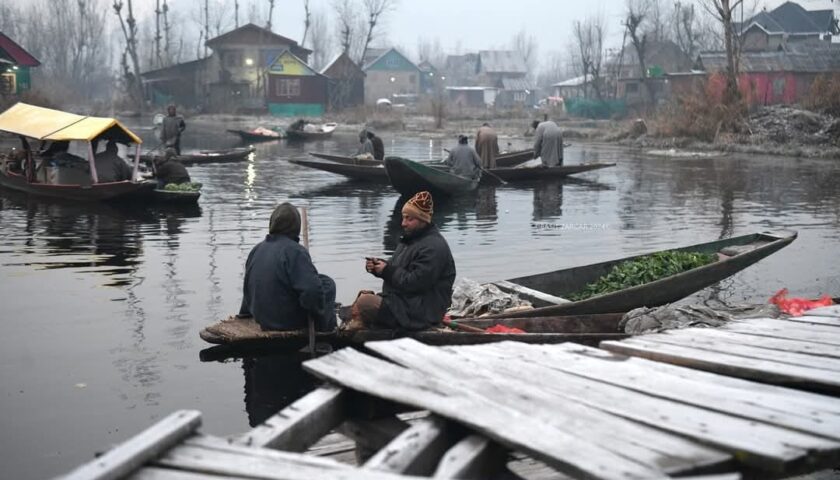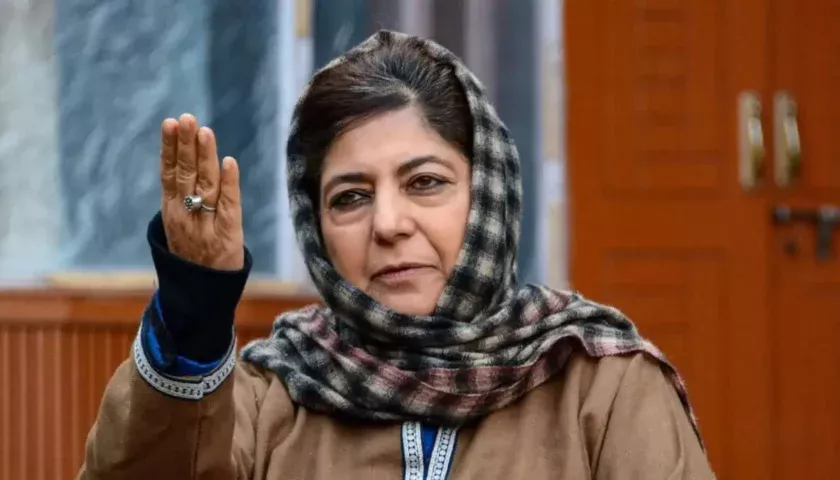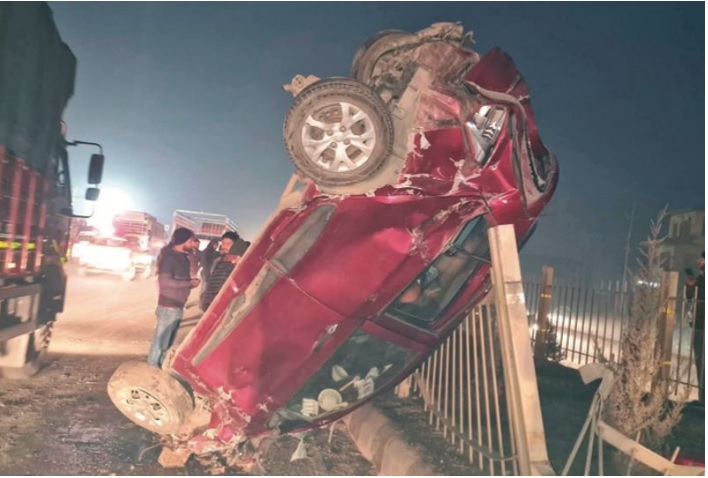Powering Hope Amid the Chill: Can Kashmir Finally Beat the Blackouts?
By : Javid Amin | October 6, 2025 | Srinagar
The Promise: Light Through the Snow
As Kashmir prepares for its long, frigid winter, the Kashmir Power Distribution Corporation Limited (KPDCL) has made a bold assurance: “This winter will be brighter and warmer.”
The declaration, made at a press briefing in Srinagar, comes at a time when public frustration with erratic power supply is at an all-time high. With temperatures expected to dip below freezing by November-end, uninterrupted electricity isn’t just about comfort — it’s about survival.
“We’ve studied last year’s failures and built a more resilient system. Our goal is uninterrupted supply, especially during peak hours,”
— Abdul Rashid, Chief Engineer, KPDCL
Inside the Winter Readiness Plan
KPDCL’s 2025 winter action plan blends infrastructure upgrades with technology-driven monitoring. Officials claim that this year’s preparations have been scientifically modeled to match demand curves during severe cold waves.
1. Enhanced Grid Capacity
To handle the expected peak load surge of over 2,300 MW during December–January, new grid stabilizers and high-capacity transformers have been commissioned across districts.
-
220 kV Pampore and Zainakote grids have undergone modernization.
-
Substations in Anantnag, Pulwama, and Baramulla have been upgraded to support heavier load distribution.
-
Load balancing mechanisms have been introduced to divert excess demand from urban hubs to peripheral regions without tripping.
2. Smart Metering Rollout
The smart metering program, once controversial, is now being reintroduced with improved transparency and grievance redressal. According to KPDCL, smart meters help:
-
Detect real-time pilferage
-
Manage load forecasting
-
Reduce technical losses
-
Enable remote disconnection and reconnection during faults
Nearly 1.25 lakh meters have been installed in Srinagar and adjoining areas, with another 80,000 scheduled before December.
3. Dedicated Winter Response Teams
KPDCL has formed quick-response units (QRUs) — mobile teams equipped with thermal scanners, repair kits, and GPS tracking — to handle emergencies in snow-bound zones. These teams will work in three shifts, ensuring 24×7 availability across districts.
-
Each district will have a central control room.
-
Backup teams will be stationed in Kupwara, Shopian, and Gurez, the hardest-hit winter zones.
4. Priority Power Corridors
To protect essential services, KPDCL has mapped “priority corridors” ensuring uninterrupted electricity to:
-
Hospitals and health centers
-
Water supply and sanitation stations
-
Educational institutions conducting exams
-
Communication towers and emergency services
A new Power Supply Command Center (PSCC) in Bemina will monitor these corridors digitally.
The Winter Reality: Power vs. Nature
Winter in Kashmir isn’t just cold — it’s relentless. When snow piles up on transmission lines, transformers freeze, and voltage fluctuates, darkness can engulf entire districts.
-
Average temperature: −3°C to −6°C in most areas
-
Peak consumption hours: 6 a.m.–9 a.m. and 6 p.m.–11 p.m.
-
Frequent outages: lasting 6–12 hours in rural belts
What Power Cuts Mean in Real Life
For households, these aren’t mere inconveniences. They disrupt heating, cooking, education, and health:
-
Heating Systems: Electric bukharis and blowers fail during outages.
-
Online Classes: Students lose access to study materials and digital exams.
-
Medical Equipment: Oxygen concentrators, dialysis units, and neonatal incubators risk shutdowns.
-
Water Supply: Pumps stall, leaving neighborhoods dry for days.
In rural belts like Tangdhar, Pahalgam, and Lolab, outages often stretch beyond 48 hours during blizzards.
“We hear this every October. But come January, we’re melting snow to flush toilets,”
— Farooq Ahmad, resident of Kupwara
Public Reaction: Hope Meets Skepticism
The promise of a “brighter, warmer winter” has sparked cautious optimism.
While some welcome the proactive measures, many remain skeptical — shaped by years of unmet assurances.
Voices from the Valley
-
“It’s encouraging to hear about real-time response teams, but the real test is during snowfall,” said Dr. Shazia Parveen, a physician at Anantnag District Hospital.
-
“Smart meters may reduce losses, but they must also build public trust. Transparency in billing is key,” added Bilal Dar, an electrical engineer from Budgam.
-
“Instead of slogans, give us a public outage tracker,” wrote a Srinagar resident on X (formerly Twitter), reflecting a growing demand for accountability.
Social media users have also suggested mobile apps for outage updates, compensation for long blackouts, and community-level monitoring boards to ensure compliance.
Why Power Management Is So Difficult in Kashmir
Kashmir’s unique geography and political context make energy distribution unusually complex.
1. Terrain and Weather
Snowfall and landslides often damage overhead lines and isolate remote regions. Underground cabling, though planned in Srinagar, is yet to expand valley-wide due to high costs and slow tender processes.
2. Transmission Losses and Pilferage
KPDCL’s aggregate technical and commercial (AT&C) losses hover around 50%, among the highest in India. Illegal hooking, outdated conductors, and unmetered connections contribute to massive shortfalls.
3. Generation vs. Distribution Mismatch
Despite abundant hydropower potential, much of J&K’s electricity is exported out of the UT under central agreements, while domestic consumption depends on limited allocation from the Northern Grid.
The paradox: Kashmir produces power but imports light.
Powering Progress: What’s Changing in 2025
The government insists this year marks a “turning point” in energy governance.
Infrastructure Upgrades
-
400 kV transmission line from Jallandhar to Amargarh nearing completion.
-
33/11 kV substations added in Kupwara, Baramulla, and Pampore.
-
Transformer capacity increased by 30% since 2022.
-
Energy Storage Pilots: KPDCL exploring lithium battery banks for critical installations.
Digital Integration
Through the Integrated Power Development Scheme (IPDS) and Revamped Distribution Sector Scheme (RDSS), KPDCL aims to digitize every node of its network — from feeder monitoring to consumer billing.
“Our vision is an intelligent grid that predicts, prevents, and responds. That’s the future,”
— KPDCL Spokesperson, Srinagar
Tourism, Economy & Health: Why Power Matters More Than Ever
Tourism Boom
JKL Travels reports a 25% surge in winter bookings — especially for Gulmarg, Pahalgam, and Sonamarg. Reliable electricity will be crucial for heating hotels, running ski lifts, and maintaining internet connectivity for digital nomads.
Healthcare Stability
Hospitals across Kashmir — including SMHS, SKIMS, and District Hospitals — depend on stable voltage for MRI, dialysis, and neonatal ICUs. Power failures in these facilities have, in the past, cost lives.
Home Heating Crisis
With the ban on electric bukharis in some zones and high LPG prices, citizens rely heavily on electric blankets, heaters, and blowers. Each outage magnifies the struggle against freezing nights.
Governance and Accountability: Testing KPDCL’s Words
Kashmir’s power woes are cyclical — each October brings new promises and each January new apologies. But this time, KPDCL’s accountability framework seems more structured.
-
Outage Dashboard: Being developed to provide public visibility into feeder-wise breakdowns.
-
Citizen Helpline: A 24×7 toll-free service and WhatsApp reporting channel.
-
Energy Audit Teams: Monitoring consumption patterns to curb losses.
The success or failure of this winter plan may well determine KPDCL’s credibility for years to come.
What Experts Say
Energy Analysts
“Jammu and Kashmir’s problem isn’t power generation — it’s inefficient distribution. Unless theft and losses are reduced, grid upgrades alone won’t help,” says Dr. Arshid Wani, an energy economist at the University of Kashmir.
Policy Experts
“Smart metering is a good step, but technology without transparency leads to distrust. KPDCL must engage communities, not just impose systems,” adds Saira Mushtaq, policy researcher at the Center for Development Studies.
Public Expectations: What Kashmiris Want
A recent online poll by Kashmir InFocus asked readers what they expect most from KPDCL this winter:
| Expectation | Percentage |
|---|---|
| Fewer Power Cuts | 47% |
| Transparent Billing | 25% |
| Real-Time Updates | 15% |
| Faster Repairs | 13% |
Clearly, reliability and transparency top the list — signaling a deep fatigue with rhetoric and a demand for measurable performance.
Editorial View: From Words to Wattage
Kashmir’s winters are not just meteorological events — they are tests of resilience, governance, and public faith.
Every unlit bulb, every frozen water pipe, every powerless hospital ward tells a story of administrative delay and infrastructural neglect. Yet, every repaired transformer, every restored line, and every warm household symbolizes progress.
KPDCL’s promise of a “brighter, warmer winter” must now move beyond press releases. The real measure will lie in the hum of working heaters, the steady glow of streetlights, and the quiet relief in households where darkness once ruled.
If the corporation succeeds, this could mark a historic turning point in Kashmir’s winter narrative — from a season of blackouts to a season of light.




